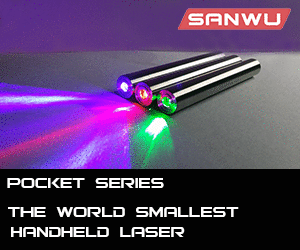Niko said:
[quote author=lasersbee link=1232767319/0#8 date=1232819808][quote author=Niko link=1232767319/0#7 date=1232817906][quote author=daguin link=1232767319/0#5 date=1232814082]If you start to study major businesses you will be amazed at the costs and profit margin added onto the cost of manufacturing. Most of the tim the price to the consumer has nothing to do with the cost of manufacturing a product. The price is "whatever the traffic will bear." That means that they will charge WHATEVER, people are willing to pay.
Peace,
dave
Exactly.
Why do you think microprocessors get cheaper every year?
One reason is because they have to lower the prices to introduce a new line of processors (which should maintain the same line of prices of the previous generation).
Also, the mass production of the last generation is well established so materials cost less than when it started.
But just think about how they cut prices. For example, top of the line intels almost always start in a range of 900-1000 dollars, the next year they may cost around 500 dollars or less.
Creating the chip is very, VERY cheap. It could cost them 10 bucks, but they have to pay for materials, the staff, machines, power for the machines, etc.
Obviously that doesn't even amount to 1000 dollars per processor, but that's the way it works.[/quote]
You only forgot to add some... R&D costs...

Jerry[/quote]
Of course.
I was told research and development is where most of the money needed to release a new chip series goes in these kinds of industries.[/quote]
You'd actually be surprised how much an individual computer chip actually costs to make. Having worked in a fab that made NAND flash and DRAM (same processes as making processors), it's quite a bit more expensive than you'd think. For starters, a new Intel fab designed around 300mm wafers will cost $2-4 BILLION just for the factory. The tools going into these fabs are amazingly expensive. The cheapest testing tools will run $1-2 million apiece (and they'll need dozens); the most expensive tools are the steppers (used for patterning/photolithography), and especially for the 45nm nodes and smaller, the steppers will be $50-60 million apiece, and again, they'll need dozens. The fab I was in had 6 steppers all in a row, and it was a fairly small fab, especially when compared to the size of what Intel does. And an individual
Laser diodes are a whole different deal, really, but similar in a lot of ways. You have to do fewer steps to make a laser diode, but at least 1 or 2 of those steps are MUCH more difficult (processors/silicon ICs don't require any epitaxial crystal growth, where epitaxial crystal growth is the most important step in laser diodes). then, you have the substrate problems. Silicon is up to 12 inch diameter wafers, and you can get a lot of chips out of a 300mm wafer, and silicon is relatively very cheap and easy to make. Laser diodes, however, require compound semiconductor substrates like sapphire, gallium nitride, or indium phosphide. These materials are not only much harder to make and therefore MUCH more expensive per area of wafer, but they also don't come in sizes nearly as big. So with silicon you have a 12 inch wafer going through the whole process and you get a batch out, with lasers you're using a 2 inch diameter wafer. You go still go through the entire process for the batch, but instead of getting a 12 inch disk full of chips out, you're only getting a fraction of that many chips for the same amount of work.
To me, it's amazing anything electronic is as cheap as it is when it gets to us. The capital investments up front and the investments to get any new chip line up and running are just astounding.



